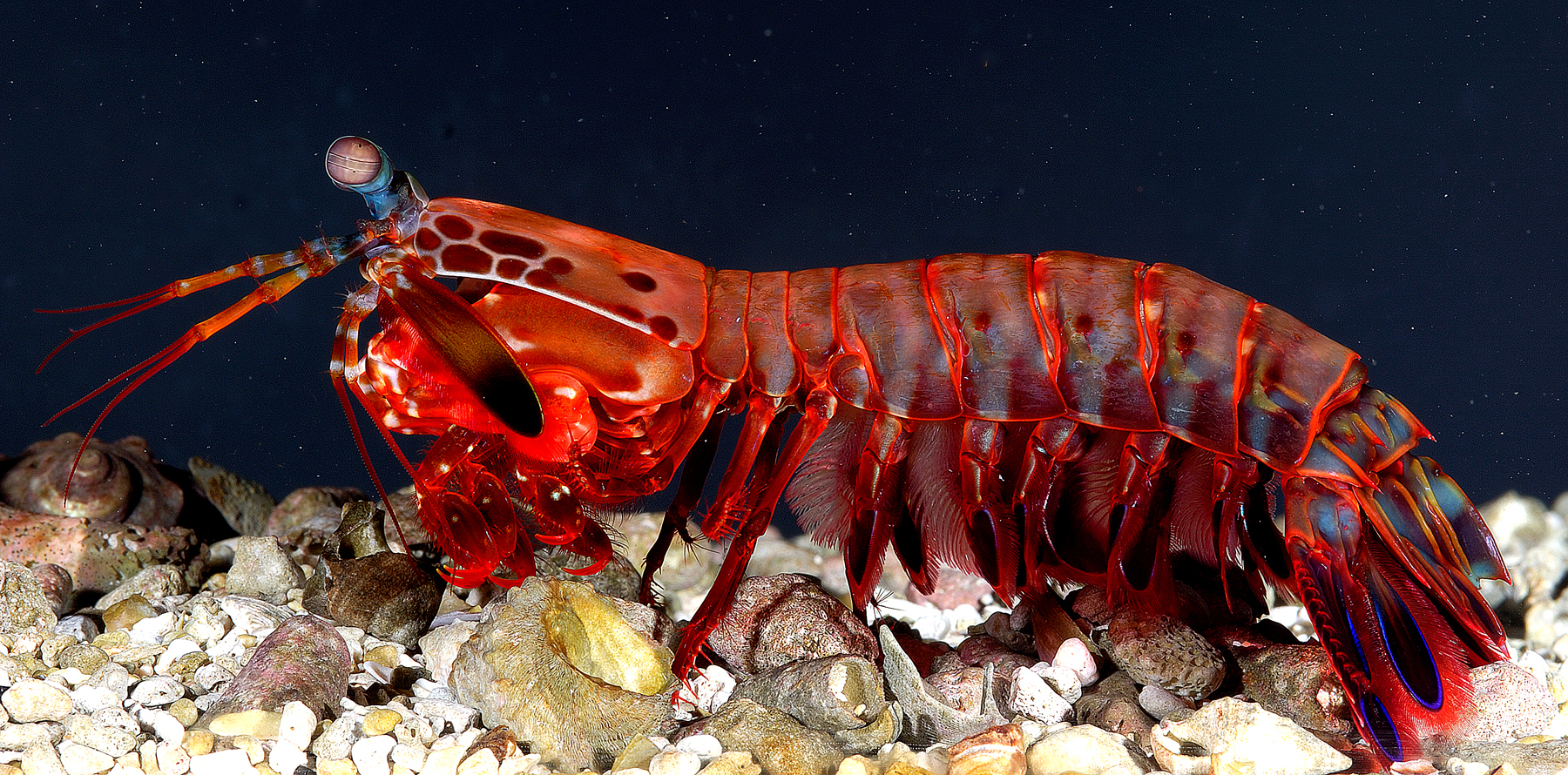
Why can mantis shrimp see so many colors? It turns out that they can’t see more colors than we can. They just process the way they see colors differently.
Manis shrimp have twelve to sixteen different types of photoreceptors in their eyes, which lead people to believe that they could see many colors, or shades of colors, that we would not be able to see. We only have three different types of photoreceptors. However, it turns out that the reason they have so many photoreceptors is to rapidly see colors without having to use a lot of brainpower.
In our eyes, we have three types of photoreceptors. These are called cones and we have cones that detect red, cones that detect blue, and cones that detect green. If you look at a banana, light comes from the sun, or an artificial light source, bounces off the banana and enters your eyes. All of the blue light will be absorbed by the banana and none of it will bounce into your eyes. The red and some of the green light will be reflected and your red and green cones will pick it up. There will be more red than green. Your brain will analyze the signals sent from the cones. It will see that there is a certain amount of red and a certain amount of green, which it will see as yellow. However, if you hold a slightly darker banana next to it, the red and green cones will react differently and the brain will be able to analyze the quantities and tell that the one banana is a different color to the other. The amount of possible combinations of different quantities of light in the three cones allows us to see up to 10 million different colors.
Humans have very good color vision. We probably evolved it to be able to see predators or hunt animals. We are not the best, though. Birds have four different types of photoreceptors. They have the red, blue, and green cones that we do, but they also have receptors that can see ultraviolet light, which is invisible to us. Logically, if mantis shrimp have 12 different types of photoreceptors, they should be able to see far more colors than both humans and birds can. However, it doesn’t work like that.
Researchers had heard the theory that mantis shrimps could see so many more colors and they wanted to test it. They trained some mantis shrimp to recognize ten different colors. The shrimp were shown two of the colors and they were given a shellfish to eat if they chose the right color. They could do this perfectly between all of the ten colors. If they had to choose between blue and orange, they could do it perfectly. Then the researchers tested the assertion that the shrimp could see more colors by reducing the difference between the two colors. Instead of having to choose between blue and orange, the shrimp had to choose between two shades of blue. They had a lot more trouble choosing the right color in this case and the researchers concluded that the shrimp were not able to see many more colors.
So, why do mantis shrimp have 12 to 16 different types of photoreceptors if they don’t use them to see more colors? It appears that it is to cut down on the need for brain processing power. When we see colors, our brain has to process the individual signals from all of the 6 million cones that we have in our eyes, and work out how much of each cone is activated, then compare that with all of the other cones, and then put that all together into an image, and do that about 60 times a second. That takes an enormous amount of brain power. Over 30% of our brain is devoted to analyzing vision and it takes us so long that we are always milliseconds behind reality.
Mantis shrimp don’t have that much processing power available to do that, so they have come up with a workaround. Their twelve to sixteen photoreceptors are each devoted to a different color, so they can basically see twelve to sixteen colors. If they see something that is red, the red photoreceptors fire and their brain knows it is red because the only photoreceptor to fire is the red one. Any shade of red and the red photoreceptor is the one to fire. That is a very simple system. This gives them an advantage because it means they can react to color very quickly because they don’t need to process it. And that is what I learned today.
Image By Roy L. Caldwell, Department of Integrative Biology, University of California, Berkeley – National Science Foundation [1], Public Domain, https://commons.wikimedia.org/w/index.php?curid=10483908
Sources
https://www.color-meanings.com/mantis-shrimp-see-more-colors-humans/
https://www.aao.org/eye-health/anatomy/photoreceptors
https://www.nature.com/articles/nature.2014.14578
https://www.nwf.org/Magazines/National-Wildlife/2012/AugSept/Animals/Bird-Vision
https://www.quora.com/How-come-we-see-yellow-as-we-only-have-red-green-and-blue-cones-in-our-eyes
https://www.sighthound.com/blog/human-eye-fps-vs-ai-why-ai-is-better

